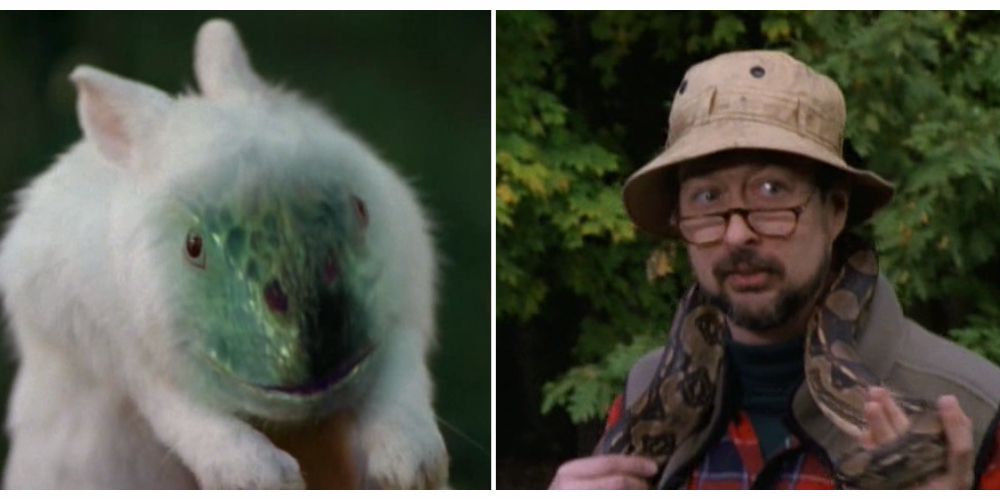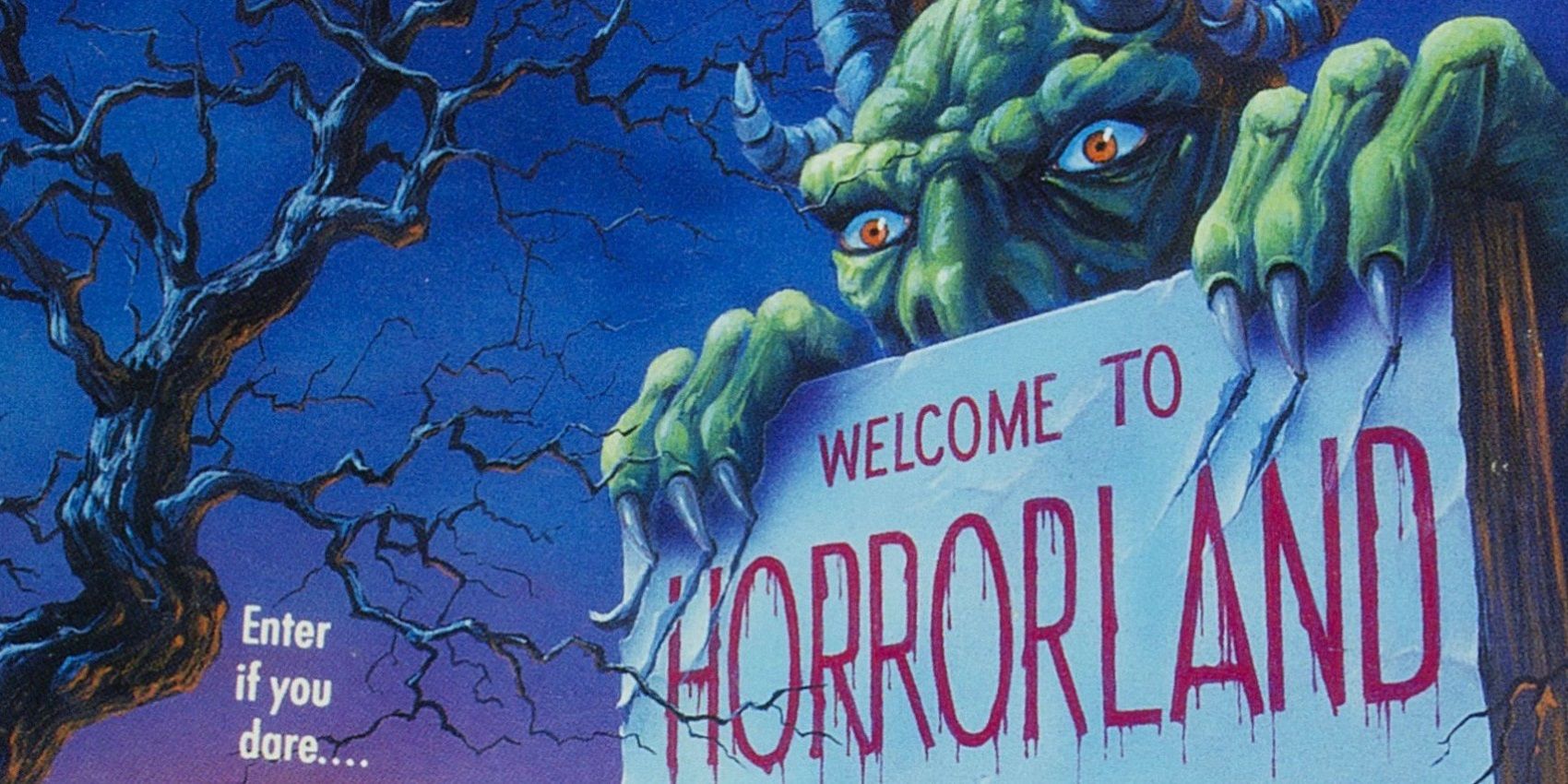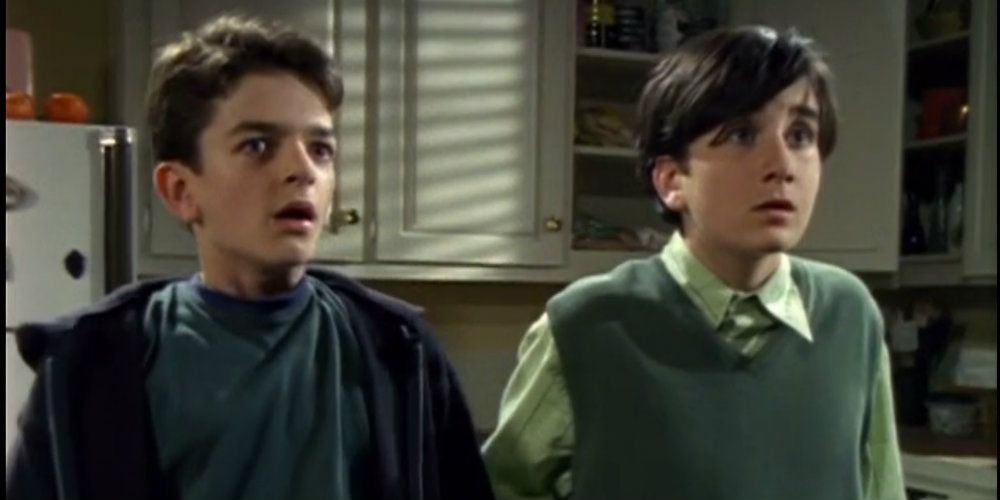The Goosebumps series, based on children's horror icon, R.L. Stine's bestselling book series, first aired in the U.S. on Fox Kids in 1995, and would wrap up a rather short-run in 1998. It may have been only on the air briefly, but there's no denying that this anthology series made its mark and today, it's considered a cornerstone in children's horror entertainment.
The Goosebumps series is still quite relevant today, especially since the releases of two nostalgia-heavy feature-length films. R.L. Stine has made a name for himself as the master of children's horror, and the 1995 TV show did justice to several of his books. Let's take a look at 10 of the most memorable episodes from the anthology series.
10 Welcome To Dead House

Welcome To Dead House was the first book in the Goosebumps series, and it's one of the most well-known stories. The TV series adaptation was definitely just as memorable. The story was about a town called Dark Falls, which brings dark times to the main characters, the Benson family. In both the book and TV show, it's revealed that the town was devastated by the explosion of the local chemical factory.
It turns out though, that the town wasn't just devastated by this incident; it was killed. So the residents of Dark Falls live their undead lives, waiting for new victims to feed on. For Goosebumps, this concept is pretty creepy, and it was really well-executed in the TV series.
9 The Haunted Mask

The Haunted Mask is another very well-known Goosebumps story, and both the book and TV series episode has been praised for dealing with quite a few down-to-earth, real issues. The TV series episode is also quite famous for its use of genuinely creepy visuals.
This was definitely a good-quality Goosebumps episode, from its surprisingly powerful special effects to its genuinely touching storyline and compelling characters.
8 The Girl Who Cried Monster

The Girl Who Cried Monster is famous for its use of grotesque body horror. It's about a young girl who has an affinity for scaring people, but her own bravery is put to the test when she discovers that the local creepy librarian is actually a tarantula-eating monster, and then later discovers that her whole family - including herself - are monsters as well.
This story was the eighth book in the Goosebumps series, and it's considered a classic. The TV series adaptation of it is definitely a memorable addition as well.
7 Night Of The Living Dummy II

The Goosebumps TV series never adapted the first book to feature the infamous ventriloquist dummy, Slappy. That story was called Night Of The Living Dummy and it was the seventh book in the series. The TV show, however, did adapt Night Of The Living Dummy II, which of course also featured Slappy as its villain.
The episode, Night Of The Living Dummy II, was as spooky as it was hilarious, and with Slappy's antics, it was completely unforgettable.
6 Teacher's Pet

Teacher's Pet was based on a short story in R.L. Stine's Tales To Give You Goosebumps. The TV series expanded the story to make it fit into the timeslot of an episode, and the plot remained mostly the same as it was in the book. Teacher's Pet is about a class trip that goes terribly wrong when it's revealed that the nature guide is actually a shapeshifting reptile monster.
Another notable point in this episode was when the main character, Becca, finds a rabbit that has the fact of a lizard. Lastly, this episode was dedicated to the memory of Becca's actress, Michelle Risi, who tragically passed away after the filming of this episode.
5 One Day At Horrorland

One Day At Horrorland is definitely one of the most popular stories in the Goosebumps franchise. It was the sixteenth book in the original series and the eighth episode in the TV series' third season. The story and plot of the episode itself were actually rather silly, in typical Goosebumps fashion, and perhaps that's what makes One Day At Horrorland so memorable.
The episode features a family who decides to take a day trip to Horrorland and wind up finding themselves as contestants on a twisted game show run by grotesque creatures called Horrors.
4 The Barking Ghost

This episode was about a self-proclaimed scaredy-cat named Cooper, and the eerie journey he must embark on when he discovers that scary things are lurking in the woods behind his new house. The monsters in this Goosebumps episode were two big black dogs who seemingly had a craving for human flesh.
It turns out that the evil dogs are actually humans who had the misfortune to get trapped in dogs' bodies. The unique tone of this story makes it one that's hard to forget.
3 Deep Trouble

Deep Trouble was the nineteenth book in the Goosebumps series, but what makes the episode so memorable is that it serves as the two-part series finale. The episode followed the book pretty closely, focusing on two siblings - Sheena and Billy Deep - who visit a small Caribbean island.
But their vacation soon becomes a nightmare when the kids discover that their uncle, Dr. Deep (a marine biologist) is hiding a dark and dangerous secret.
2 An Old Story

An Old Story was a short story from Stine's book, Still More Tales To Give You Goosebumps. It was a rather obscure story until the TV show adapted it into an unforgettable episode. It's often known as the weirdest episode of Goosebumps.
An Old Story is about two boys who fall victim to their eccentric aunt who feeds them prune-laced foods that make them age rapidly. Even creepier, she does this because she plans on marrying them off to her friends, for a price.
1 The Werewolf Of Fever Swamp

The Werewolf Of Fever Swamp was the first Goosebumps book to revolve around a werewolf, and it's one of the creepiest and most memorable. In the book, the monster is always lurking in the background but never fully comes to light. The TV series mimicked this method, making the episode delightfully spooky.
Another antagonist in this story was the disease, Swamp Fever, that affected the characters and ultimately caused them to turn into werewolves. It was a pretty heavy story by Goosebumps standards.
from ScreenRant - Feed https://ift.tt/2SVZTbu





No comments: